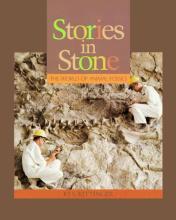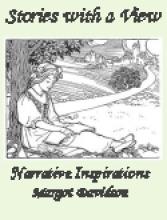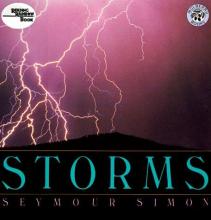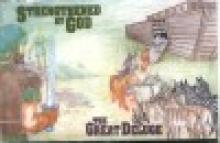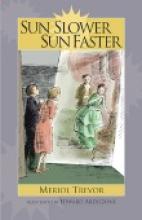No name
Stories from Shakespeare
Stories in Stone
Although this is a meaty book for its age level and rather lengthy, my children were completely absorbed when I read this aloud to them.
Stories in Stone presents the "World of Animal Fossils" and the story of the dinosaurs from the point of view of generally accepted scientific theories of today. Chapter 1 (A Rock Sandwich) covers introduces the idea of fossils, how they were formed, types of fossils, the scientific classification of animal species ("Why Dinosaur Names are Hard to Spell") and how scientists determine the age of fossils.
Chapter 2 (Buried at Sea) covers the oldest fossils that are believed to have come from ancient oceans (although they are found in very dry places today). This chapter also covers the theory that "about 180 million years ago, Earth had one huge continent ... surrounded by a large ocean".
Chapter 3 (Swimmers in the Sand) covers fossils of early fishes and sharks and ancient ocean mammals and reptiles.
Chapter 4 (The Terrible Lizards) covers the dinosaur world – including the first modern discoveries of dinosaur bones and the general scientific understanding of when and how the dinosaurs lived.
Chapter 5 (Furs and Feathers, Bones and Teeth) covers fossils of ancient birds, saber-toothed cats, mammoths and mastodons.
I've never had a great interest in fossils myself and always tended to skip over the relevant sections of animal books, but I have to admit that this book was well-written and quite interesting.
full-color photos
Stories with a View, Narrative Inspirations, Selected Poetry and Paintings, Story starters for Grades 3-4
I must admit a bias. Because I have used the method suggested in Stories with a View for years with my own children, I highly recommend this resource. Why? It works! By observing and interacting with pictures and poetry, young writers are inspired to write interesting fiction.
In fact, Mrs. Davidson makes this method even easier to implement by offering discussion questions and suggested "story starters" to prompt the young writer. For example, with A Restful Tune (a painting about a shepherd boy playing a reed pipe) the questions include:
- Describe where this scene takes place?
- Who is the boy?
- What time of day do you think it is?
- What are the sheep doing while the dogs rest?
Paging through the various pictures, even the child most adverse to pen and paper should have something to say about these paintings. Some of them are truly amusing. In The Mouse by Giacomo Favretto, you can just imagine the young women squealing on the chairs at the thought of the mouse scurrying across the floor as the little boy tries to capture it in the corner.
Since younger children, preschool and kindergarten age, have very fertile imaginations, they too could use this resource, having the child dictate the story aloud. 79 pages might not seem like a lot of material at first, but as anyone who spends time writing knows, the writing process takes time and may drafts to create a polished final copy. There is more than enough material here to inspire the budding writer. Additionally, the suggestions and principles outlined here can be applied to stories, poems and paintings elsewhere too.
The Guide to Stories with a View includes an overview for the teacher, suggestions for how to incorporate this writing program into your language arts program, and directions on how to implement the program; including specific dialogue to guide and motivate the student through the writing process to a story that the student will be proud to keep in a "writing portfolio." If you have a reluctant writer, several story starters have been included in the guide for each painting or poetry selection. Your own writer may want to add some new ones to the list.
With my own children, I have mostly used pictures and picture books to stimulate them to write their own stories. Using poetry now adds another whole new dimension to draw on. With this resource, I don't have to look for paintings or poetry to inspire my children; I have it all in one place with questions to prime the writing pump. These attractive, full-color paintings and beautiful poems will stimulate great thoughts and interesting stories in even the most writing resistant child. You will be surprised by the results.
Teacher's Guide, 13 pp. Three-hole punched
Storms
Like Seymour Simon's book on Lightning, reviewed above, this text combines incredible photographs with very interesting text to introduce young readers to some basics of severe weather. The text concentrates on thunderstorms, lightning, hail, tornadoes, and hurricanes. The statistics and little stories about these storms are weird and fascinating and you'll also find lots of solid scientific content.
Story of Edith Stein's Life
Reading Comprehension: Stories of the Saints, Vol. 3, has an excellent 25 page story of Edith Stein's life and death complete with many black and white photos and a comprehension question section. It is written at an upper grade school reading level, but would make excellent reading for older students and adults and could be read aloud to younger children as well. Click here to read a complete review of this book.
Strengthened by God/The Great Deluge
Student Writing Intensive, Level B
Subtraction Songs
Audio Memory offers math audio tapes and CDs for practicing "Math Facts" in Addition, Subtraction and Multiplication. (Sold separately from each other). These are Math drills set to music (of the synthesized variety). Although these make for an easy memorization aid, I found the songs almost unbearably sappy. (My children did like them though.)
Sun Slower, Sun Faster
During the course of their visit to Welston, the children make frequent visits to the past - each one a little further back in history. Although each visit is rather short, the details of the story are quite interesting - the kinds of names used, the way people speak and dress, and other historical details about specific places and events. On the whole, it is a fun and suspenseful adventure story that whets the appetite for further research into history.
A number of topic threads run through the story (including interesting details of the ups and downs of life around Bristol since Roman times); but the most significant thread is that of the Catholic Church and, more specifically, the Holy Mass. Cecil and Rickie meet priests on the run during Elizabethan times and under the persecution of the Romans and also get a taste of life when the Catholic faith was status quo. The story contains many beautiful explanations of various parts of the Faith in an accessible fashion. During the course of the story, both children come to appreciate and embrace the Catholic faith. The reader is also left with the sense that every age struggles with its particular evils and vices, but good and truth endures by the grace of God and the courage and faith of good people.
The story does contain some criticisms of the Catholic Church - both by a few characters in the story who don't know better and some experiences of the children in their travels. One scene in particular might be a little disturbing: the children come upon a Franciscan friar with a flirtatious girl on his lap (The word they use is "sluttish"- parents today might consider this an inappropriate word, but I think the connotations were slightly different 50 years ago in England. Also, this is an obscure word for children and the concept might go over their heads.). This scene is followed up later in the story by a wonderful explanation of the struggles of the Church and religious orders and how they both tend to be stronger during times of persecution than during "easy times." My daughter, who was reading the book alongside me, didn't notice the particular reference, but did understand the overall concept within the story of the presence of fallen nature within Catholics and non-Catholics alike. Although I do think it very important for children to be exposed to some of the evils that have made their way into the Church over the centuries (I might even call it "inoculation"), I believe this book will be most appropriate for children ages 12 and up for independent reading, but suitable for younger children as a read-aloud. Appropriateness will vary according to the thoughtfulness of the child and how well-read they are on historic matters. It is important to note that this aspect of the book is not a weakness in any sense - just a somewhat mature topic. The story is much more meaningful and the conversions are much more complete and believable because a fuller picture of life, the Church and human nature is presented.
Some of the geographical terms might be a little unfamiliar to American children, but my 11 year old daughter (who was familiar with some terms and places from sources such as Pride and Prejudice and Rick Steve's Travel Shows) really enjoyed reading the book and now considers it one of her favorites.


